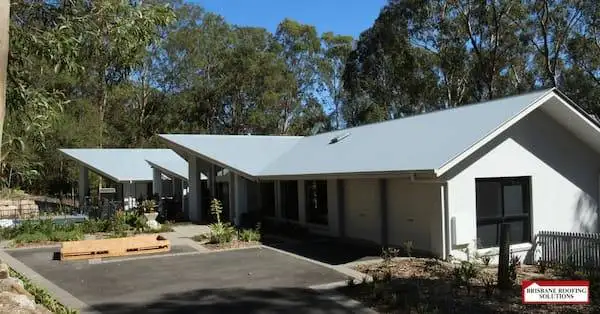As a homeowner it can be near impossible to know whether your roof needs repair, a roof restoration or even a complete replacement.
Whilst we at Brisbane Roofing Solutions are roofing professionals and know exactly what to look for during a roof inspection, it can be a tricky process doing your own roof inspection. What should you look for? What are the telltale signs your roof needs attention?
Here we have outlined important warning signs to look for when inspecting your
roof. After reading the following information you will know when your roof needs repairing and will be equipped to carry out your very own roof inspection.
By acting quickly you can save money on expensive roof repair bills by following this 10-point roof checklist.
1. CHECK FOR BROKEN ROOF TILES
Broken roof tiles may cause leaks which can lead to structural damage.
Simply have a good look around your roof (we do not recommend you climb onto your roof without the appropriate safety gear in place). If you see broken tiles write down how many you can see and where they are.
2. CHECK FOR BROKEN RIDGE AND GABLE TILES
Broken ridge and gable tiles can also cause leaks. Make sure you check these tiles thoroughly.
3. CHECK THE CONDITION OF RIDGE CAPPING
Ridge capping is also known as bedding and pointing. Major or minor cracks in the bedding and pointing can cause leaks or dislodgement of the ridge.
4. CHECK THE CONDITION OF VALLEY TILES
Broken valley cuts need clipping to prevent dislodging.
5. CHECK FOR WEEP HOLES
Having no weep holes can cause water to build up and eventually leak into your ceiling.
6. CHECK THE CONDITION OF VALLEY IRONS
Valley irons are susceptible to weather and can rust away. Check to see if any valley irons are showing signs of rust.
7. INSPECT THE LEAD FLASHING
Lead flashing should be cut every 3 metres due to the lead shrinking and expanding during hot and cold periods. Lack of expansion cuts will cause cracking, leading to leaks.
8. INSPECT THE ROOF SURFACE
What is the condition of your roof tiles? Is there visible moss and lichen buildup. Do your roof tiles need recoating?
9. INSPECT YOUR ROOF FIXING METHODS
Have the tiles been secured down properly? During high winds, if tiles are not secured properly they may lift, causing the loss of parts, or in extreme cases, all of your roof tiles.
10. CHECK THE CONDITION OF YOUR SARKING
Sarking is a fire and moisture retardant and is laid under your tiles. Do you need to check whether the sarking has deteriorated due to age? Are there any visible holes? Electricians put holes in the sarking for the placement of wires.
A WORD OF CAUTION REGARDING ROOF INSPECTION & REPAIR
Plenty of home homeowners read DIY manuals, watch renovation television shows or watch YouTube for tips on how to repair their own roof.
There are major safety precautions required, and if you try to make any repairs and injure yourself or cause further damage, it is unlikely insurance will cover you. For any roof repairs, roof restorations, or roof replacements we highly recommend you hire a skilled roofing company. But it does not hurt to be well-informed!

